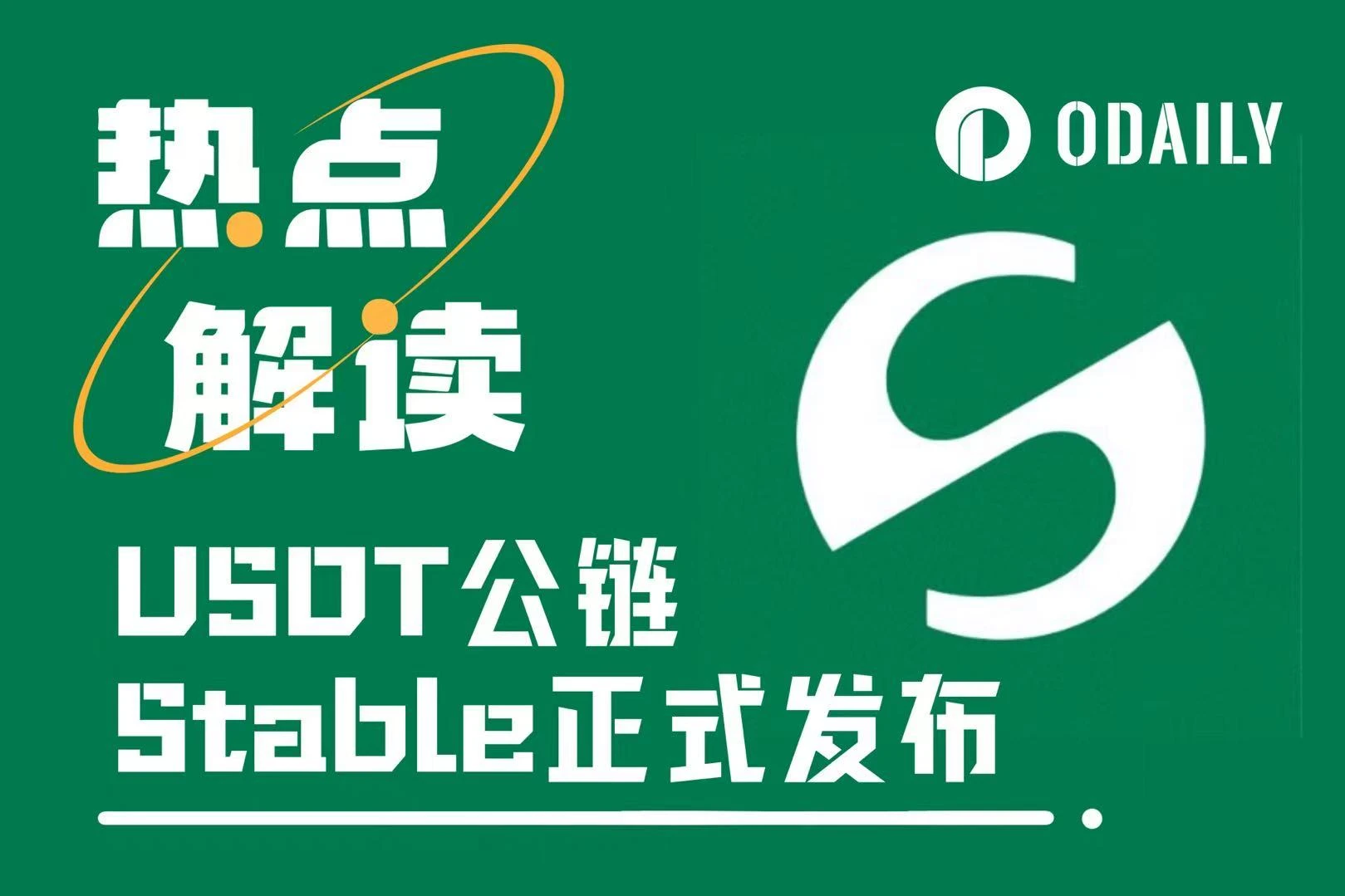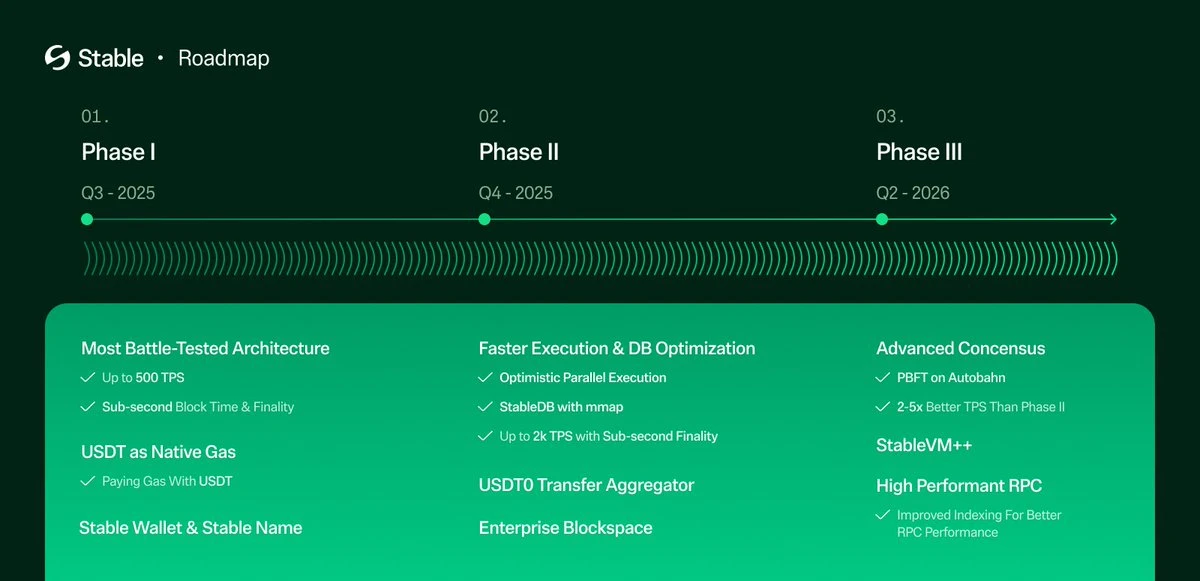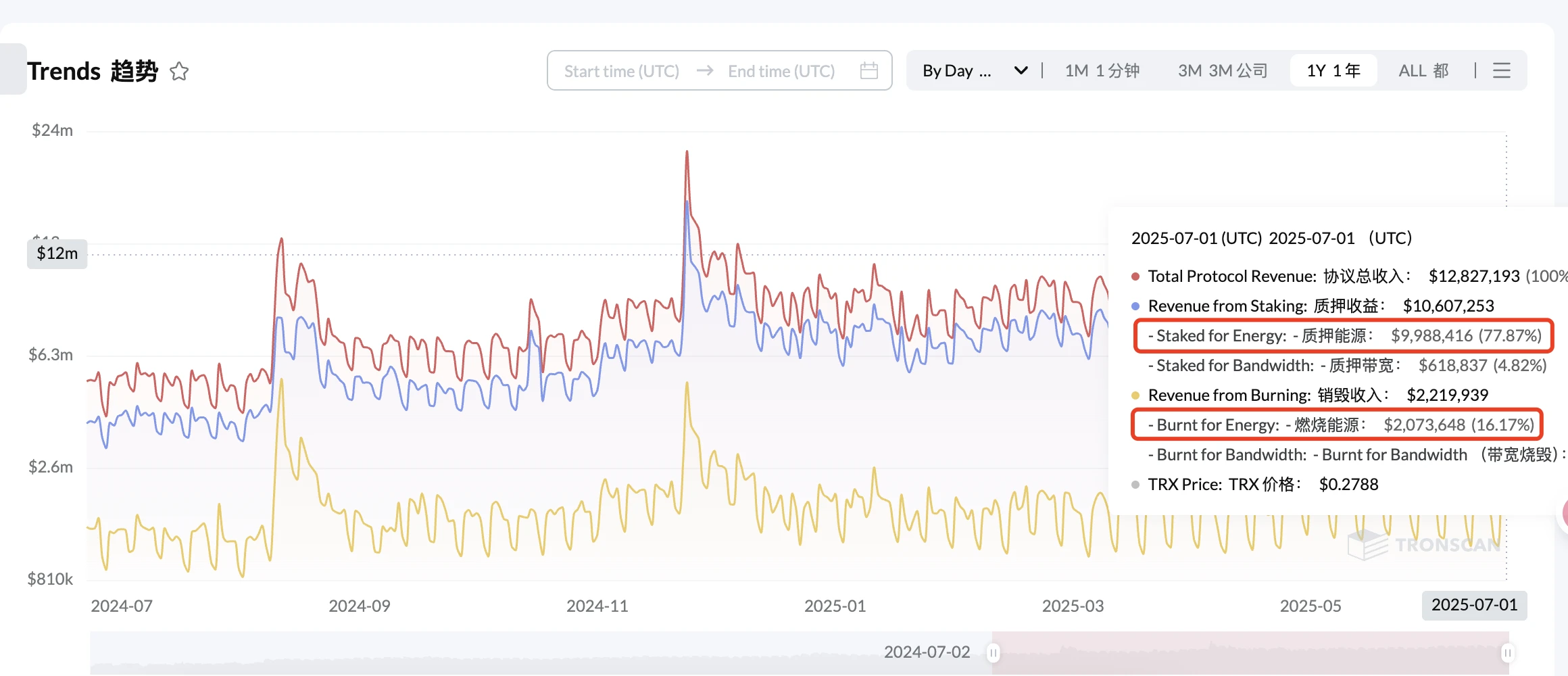Original | Odaily Planet Daily ( @OdailyChina )
Author: Wenser ( @wenser 2010 )

Last night, the L1 public chain Stable supported by USDT was officially released, which also means that the USDT ecosystem has its own exclusive public chain. On the other hand, the USDT issuance of the TRON ecosystem exceeded 80.6 billion on the 22nd of last month , accounting for 51.6% of the total global USDT supply, setting a new record high.
There is no doubt that as the stablecoin track ushered in epic benefits, even Tether, which has an annual net profit of over 13 billion US dollars, could not remain indifferent and handed over the benefits of the USDT settlement layer to TRON and other ecosystems. Can Stable, which uses USDT as its native gas and provides free peer-to-peer USDT transfers, replace TRONs dominant position in the USDT issuance network? What is the future development direction of Stable? Odaily Planet Daily will briefly analyze the above issues in this article.
Stable: The first L1 public chain powered by USDT
In the introduction document officially released by Stable, the vision of the public chain is grand: remittances are as easy as sending text messages to friends, businesses can settle payments instantly with no hidden fees, and developers can build financial instruments without restrictions.
When it comes to positioning, the official Stable document explains: “ Stable is a dedicated L1 stablecoin public chain, targeting Payments using USDT are optimized to address the inefficiencies of the current infrastructure - unpredictable fees, slow settlement times, and overly complex user experiences. In essence, Stable aims to unlock the true potential of stablecoins, allowing everyone to transact faster, cheaper, and more reliably.”
As for the specific role of Stable, the official first gave a brief explanation from the perspective of user-side needs.
Industry pain points: high transaction gas fees, long settlement cycles, and high usage barriers
At present, in addition to the pressure of regulatory compliance, the factors that hinder the development of stablecoins such as USDT and USDC include the following problems, whether for individual users on the C-end or enterprise users on the B-end:
In terms of usage threshold, users need to first understand the basic information of blockchain network, crypto wallet mnemonics and private keys, daily password management and security awareness, etc.
In terms of transaction costs, the gas fee for a single on-chain transfer and payment is also a mandatory expense. If it is a small-amount, high-frequency operation covering daily life application scenarios, it can be described as cutting meat with a knife, and the cumulative cost is not low;
In terms of the settlement cycle, some enterprise-level stablecoin payment and transfer chains are long and the procedures are complicated. In order to ensure the security of internal and external funds management, the settlement cycle needs to be extended, which will affect the business development between enterprises to a certain extent.
Stables 7 basic functions: Gas cost, throughput, security and scalability, even wallets
According to the official document, as an L1 public chain with the original “StableChain” concept, the main functions of Stable include the following 7 points:
USDT as native Gas: Users pay transaction fees directly in USDT, eliminating the complexity of holding additional, volatile tokens. Peer-to-peer USDT transfers do not require gas, making it easy to remit and conduct daily transactions.
Ultra-low fees and instant settlement: Transactions can be confirmed within seconds, and the minimum fee is always kept well below 0.1 cents, suitable for both micropayments and large-scale settlements.
High throughput: Stable can handle thousands of transactions per second, with fast and reliable performance during peak periods.
Enterprise-grade security and scalability: Institutions will benefit from guaranteed block space allocation, scalable batch processing, and strong security measures to ensure platform resilience and trustworthiness.
Cross-chain interoperability: Use USDT0 and LayerZero technology to seamlessly bridge USDT to other blockchain ecosystems.
Developer-friendly environment: With full EVM compatibility, a dedicated SDK, and powerful APIs, developers can easily build their own decentralized applications (dApps) for stablecoin use cases.
Wallet for global payments: Stable Wallet offers an intuitive interface with features such as social account login, debit/credit card integration, and readable wallet aliases.
It is worth mentioning that according to the information officially released by Stable, this “USDT native L1 public chain” does not only serve institutional and enterprise users, but serves everyone (the original words are: Stable for Everyone).
Stables target users: individuals, enterprises, developers
Individuals: can use Stable wallets to send money around the world for free, pay for goods and services with USDT-pegged debit or credit cards, or make instant cross-border transactions;
Enterprise: Streamline operations and facilitate high-throughput, predictable-cost transactions while bypassing expensive third-party processors and significantly reducing transaction fees;
Developers: It makes it easier for them to build stablecoin-based dApps on the Stable chain, such as payment platforms, lending protocols, or DeFi solutions.
Stables future three-step strategy: starting from USDT, but not limited to USDT
In addition to the existing plans, Stable’s ambition is not just to build “stable currency payment infrastructure”, but to build a “Stable ecological network”, so it also plans the future into “3 major development stages”:

Stables three-step strategy
Phase 1: USDT Base Layer (Q3 2025)
The main tasks of this phase are:
Use USDT as the native gas token.
Achieve sub-second block times and finality. (Tentative goal is up to 500 TPS)
Launched Stable Wallet and Stable Name to enhance user experience.
In the initial stage, Stables goal focuses on ease of use and convenience, so it is planned from the aspects of wallet entrance, address domain name, gas payment, confirmation time, etc. The main purpose is to attract as many loyal users of USDT as possible from other ecosystems.
Phase 2: USDT Experience Layer (Q4 2025)
The main tasks of this phase are:
Use OP parallel execution to increase transaction throughput. (Tentative goal is up to 2000 TPS)
Introducing USDT transfer aggregators and dedicated block spaces for enterprises to ensure efficient and consistent transaction processing.
In the mid-term, Stable will focus more of its technology on enterprise-level use to ensure improvements and guarantees in terms of transaction scale, transaction performance, and transaction results. By then, Stables dedicated block space may be like TRONs current energy leasing market, deriving a transaction market with a scale of hundreds of millions or even billions of dollars.
Phase 3: USDT full-stack optimization layer (Q2 2026)
The main tasks of this phase are:
Upgrade to DAG-based consensus to improve speed and resilience. (Tentative goal is 2-5 times that of Phase 2, i.e. 4000-10000 TPS)
Expand developer tools and resources to facilitate dApp development.
In the final stage, Stable is expected to build a StableVM++ ecosystem, the RPC node performance will also see further development, and the ecological network will generate more developer applications in addition to separate stablecoin payments, transfers, and settlements.
Stable VS TRON: There will be a battle between the son and the partner
At present, after the official launch of Stable, the one that has suffered the greatest impact is the “network with the largest USDT issuance” - TRON.
Although TRON has taken the absolute initiative in the stablecoin market with its market position of the largest USDT issuance, the appearance of Stable as a L1 public chain means that TRONs former stablecoin business may face a major test. Specifically, it mainly includes the following aspects:
Test 1: USDT issuance drops sharply
After Stable is launched, if nothing unexpected happens, Tether will intentionally or unintentionally control the issuance of USDT on TRON and other blockchain networks, and instead place the main issuance in the Stable ecosystem.
After all, the USDT in the Stable ecosystem has cross-chain interoperability supported by USDT0 and LayerZero, and can circulate to other blockchain networks more flexibly and freely without affecting the usage scenarios of USDT.
Test 2: USDT vs USD1
Previously, under the mediation of Justin Sun, TRON became the third largest ecosystem of the stablecoin USD1 launched by the Trump familys crypto project WLFI. To a certain extent, it also reflects the new and old stablecoin distribution channel competition between USDT, a veteran stablecoin, and USD1, a new generation of stablecoin.
The former is TRON’s core base and one of its main sources of income; the latter is backed by Trump and a number of American asset management institutions.
The emergence of Stable will further intensify the battle for market share between USDT and USD1. As an “ecological middleman”, TRON may have to “take sides” in the near future.
Test 3: Agreement revenue may be affected
According to Tronscan official website data , the TRON protocol revenue in the past year was as high as 3.15 billion US dollars; in the past 30 days, the total protocol revenue was as high as 343 million US dollars; on July 1 alone, the total protocol revenue was as high as 12.83 million US dollars. Among them, energy staking and burning related revenues related to stablecoin transfer transactions such as USDT accounted for about 94%. It can be said that USDT accounts for 99.02% of the TRON ecosystem, making almost the same contribution to its protocol revenue.
Whether the future cooperation between the two parties can continue will mainly depend on the development trend of Stable.

From a commercial perspective, the business niches of Stable and TRON are undoubtedly quite overlapping, and there will inevitably be a battle between the two. For more data about TRON, please refer to the article With Plasma in the left hand and Stable in the right hand, Tether is building its own TRON .










